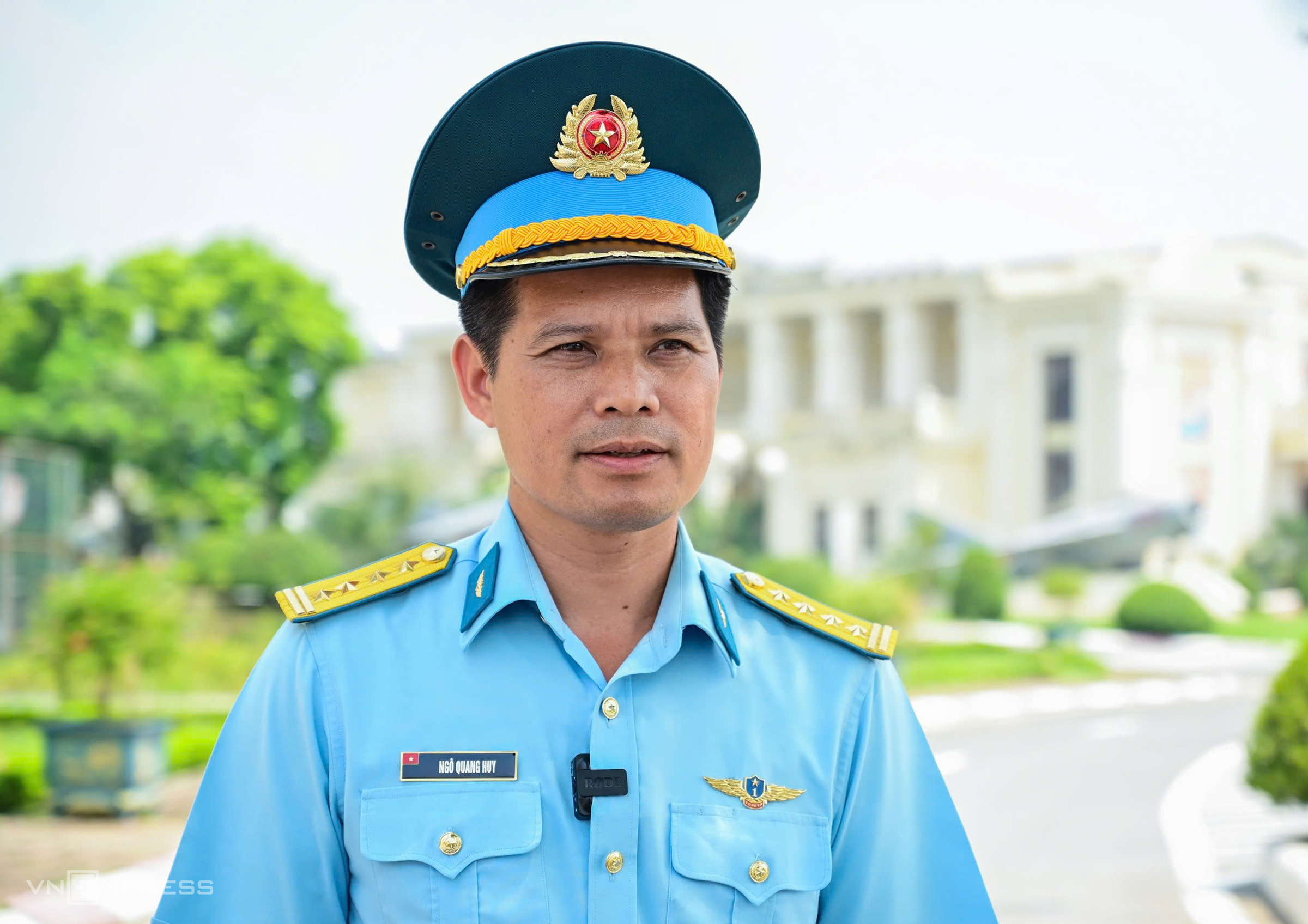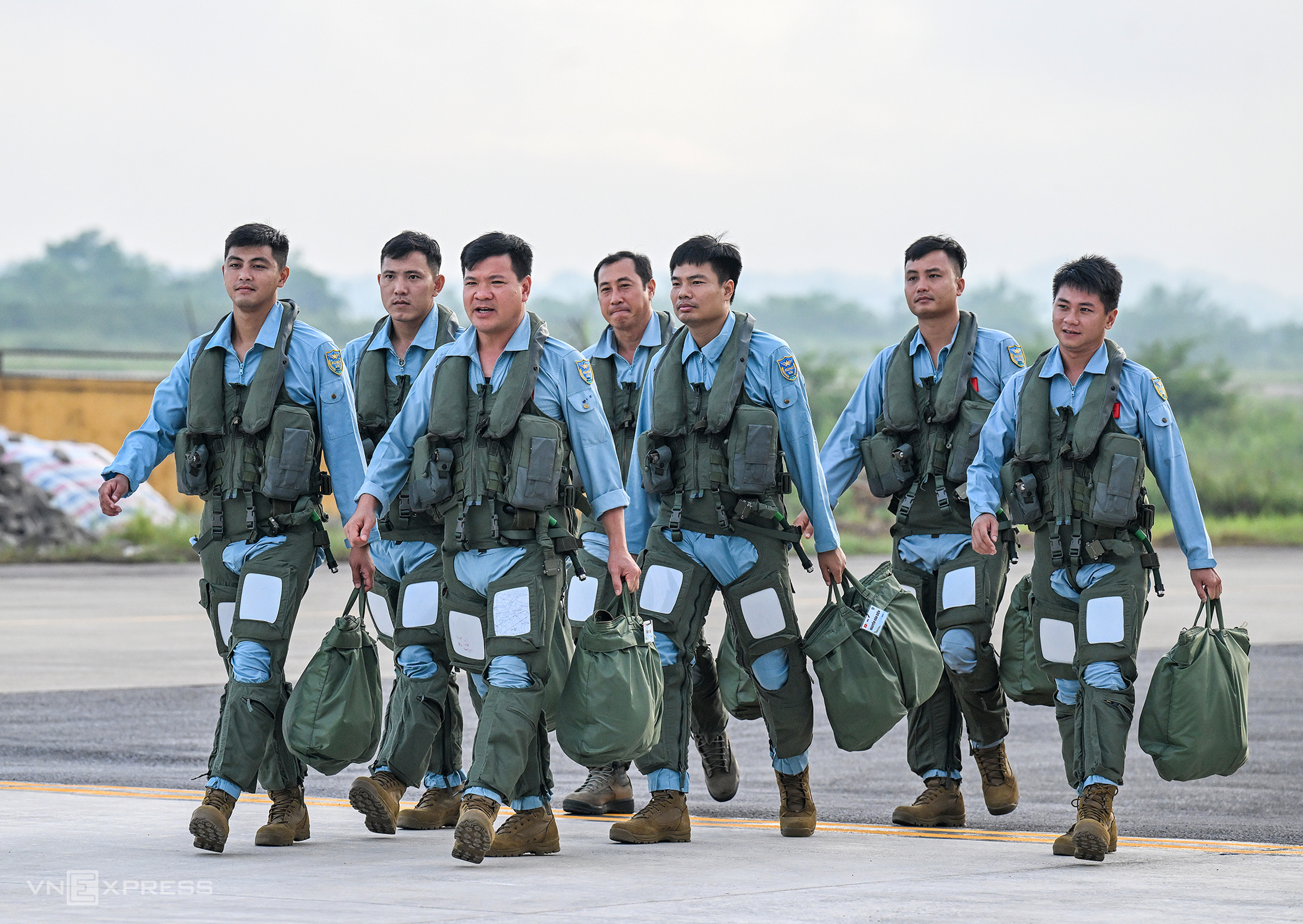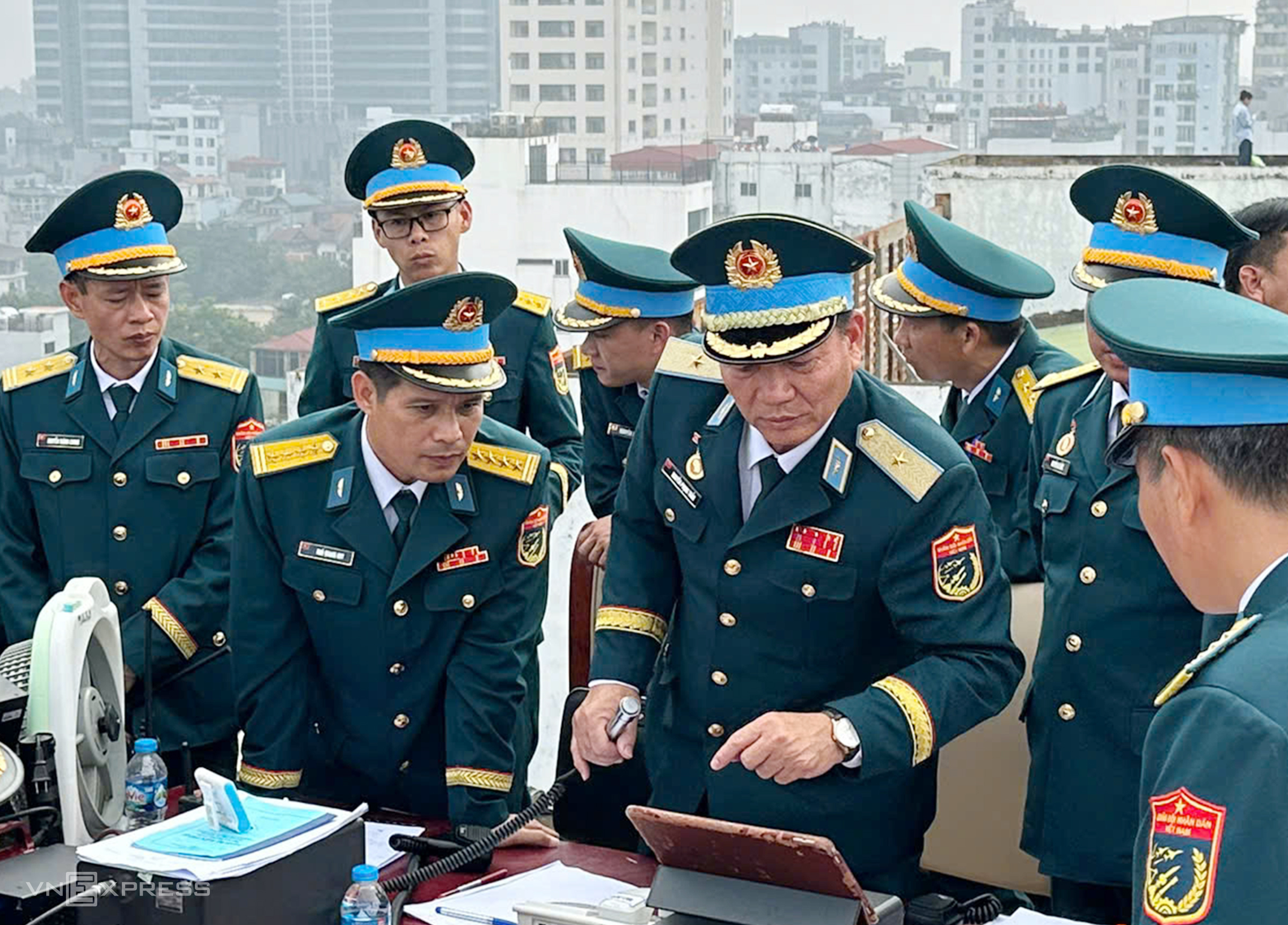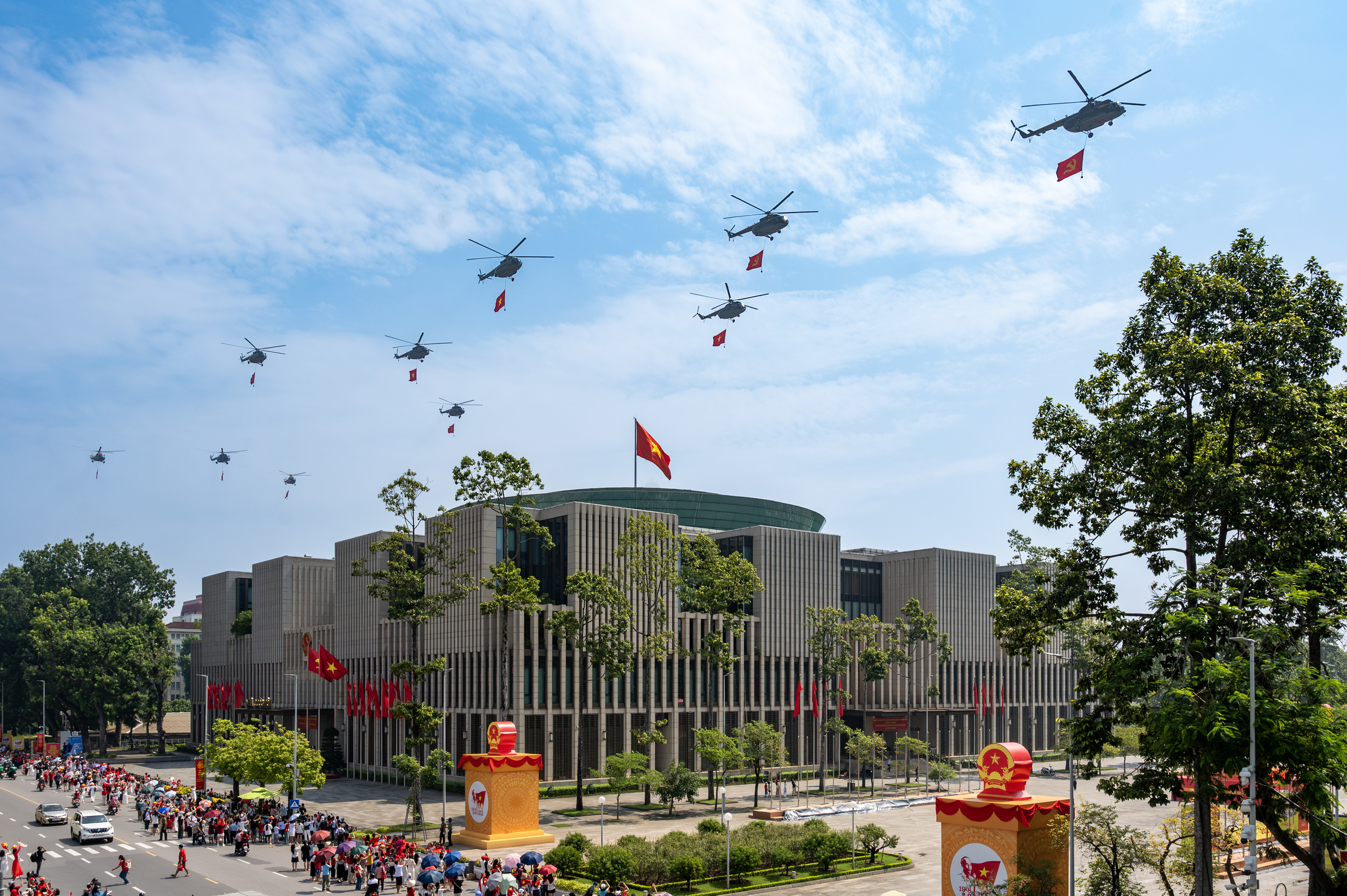The Vietnam People's Air Force recently completed a successful flyover to commemorate the 80th National Day. VnExpress interviewed Colonel Ngo Quang Huy, deputy commander of the 371st Air Division, Air Defense - Air Force, who directly commanded the air force element in the A80 Grand Ceremony, about the preparation, organization, and execution of the mission.
 |
Colonel Ngo Quang Huy, deputy commander of the 371st Air Division. Photo: Giang Huy |
Colonel Ngo Quang Huy, deputy commander of the 371st Air Division. Photo: Giang Huy
How did the 371st Air Division prepare for the flyover across Ba Dinh Square on September 2?
Upon receiving directives from the Ministry of National Defense and the Air Defense - Air Force Service, we recognized this as a special mission, both an honor and a great responsibility. With fighter jets returning to the skies above Ba Dinh Square for the first time in 40 years, absolute precision was paramount.
The 371st Air Division led the overall planning, coordinating with the 370th, 372nd Air Divisions, the Air Force Officer College, and the 918th Brigade. The mission involved 9 formations with over 30 aircraft, including helicopters carrying flags, CASA C-295/C-212i transport planes, Yak-130, L-39NG, and Su-30MK2 jets. The formations took off from three airbases: Hoa Lac, Gia Lam, and Kep, to perform over Ba Dinh Square.
We emphasized to each unit the importance of close coordination, thorough practice, and absolute safety. From planning the flight path, assigning tasks, positioning forces at airbases, to segment training, joint exercises, rehearsals, and the final rehearsal, everything was meticulously prepared, with contingency plans for every situation.
Colonel Ngo Quang Huy recounts the training journey of the Air Force for the 80th National Day grand ceremony. Video: Huy Manh
How were pilots selected for the 80th National Day flyover, and what was their training process like?
Pilots were selected from various air divisions nationwide, all with excellent flying skills, experience, and high flight hours. Key criteria included composure, flying proficiency, good health, ability to handle pressure, experience, and strict adherence to coordinated discipline.
Training progressed gradually. Pilots began with theory, airport regulations, simulations on the performance field and in training chambers. They then flew solo, followed by 2-3 aircraft formations, gradually increasing to 4-6 aircraft, and finally, large formations. Each maneuver was practiced repeatedly until mastered.
During peak periods, there were 4-5 flight sessions per week, including Saturdays and Sundays, with each pilot performing multiple flights per day. After each session, there were debriefings and detailed analysis of each maneuver for timely adjustments. As a result, everyone approached the rehearsals and the official ceremony with confidence and composure.
How was the overall plan developed to ensure over 30 aircraft of various types, departing from three different airbases, could appear simultaneously over Ba Dinh Square at the precise moment?
The decisive factor was accurately calculating "H-hour"—the moment the aircraft passed over the grandstand. We applied the Time On Target (TOT) principle, requiring aircraft to reach the target exactly as planned, ensuring absolute synchronization. In military aviation, this is a stringent standard, demanding precise calculations, adherence to flight regimes, and precise execution of every maneuver. The navigation team meticulously calculated the speed, distance, and approach direction of each formation.
Jet aircraft from Kep Airport flew further but at higher speeds, while helicopters from Hoa Lac were closer but much slower. Therefore, each type had different takeoff times to converge simultaneously over Ba Dinh Square.
The formation order was based on the tactical and technical characteristics of each aircraft type: low-speed, stable helicopters carrying the Party and National flags led, followed by CASA transport planes. The three faster jets, Yak-130, L-39NG, and Su-30MK2, flew last. The groups were separated by altitude and safe distances while maintaining the formation's aesthetic appeal.
Along the flight path, we designated holding areas and holding patterns for formations to adjust distances and spacing. Upon reaching the grandstand, the entire formation flew past safely within the airspace, creating a visually stunning effect.
 |
Pilots of the 910th Regiment, Air Force Officer College, flying L-39NG formations, transferred from Tuy Hoa to Kep at the end of July to practice for the grand ceremony. Photo: Giang Huy |
Pilots of the 910th Regiment, Air Force Officer College, flying L-39NG formations, transferred from Tuy Hoa to Kep at the end of July to practice for the grand ceremony. Photo: Giang Huy
What were the training stages, and how was each phase evaluated?
Training was divided into three phases: unit-level training, centralized training, and combined force training. From early July, forces were mobilized to the North. Hoa Lac Airport hosted helicopters from the 916th Regiment (371st Division), 917th Regiment (370th Division), and 930th Regiment (372nd Division); Kep Airport trained Su-30MK2, Yak-130, and L-39NG jets; and Gia Lam Airport was used for CASA training. Each flight session specified altitude, speed, distance, and TOT.
After each flight, we conducted immediate debriefings to analyze strengths, weaknesses, and corrective measures. Evaluation criteria included maintaining formation, accurate TOT, absolute safety, and a visually appealing formation over the grandstand. Only after meeting all requirements were units allowed to proceed to the next training phase, culminating in rehearsals over Hanoi.
How were pilots trained for complex maneuvers like helicopters towing the National and Party flags or Su-30MK2 jets releasing flares over the city, ensuring absolute precision and formation safety?
Helicopters towing flags require extreme stability. With flags tens of meters long, deviations in speed or altitude can affect the visual presentation and flight safety. Pilots practiced repeatedly, both at the airport and in complex conditions, to ensure the flags flew beautifully and safely.
Su-30MK2 and Yak-130 flare releases were also special maneuvers. Flares were activated only at pre-calculated locations to avoid impacting the city. Pilots had to maintain tight formations at high speeds and execute maneuvers precisely. We trained under strict conditions, including low-altitude flights in various weather conditions and performing maneuvers from simple to complex.
Given Hanoi's dense population and tall buildings, how did the Air Force coordinate with civilian air traffic control and other forces to establish flight corridors, synchronize speed and altitude, and handle emergencies?
We coordinated from the outset with the Civil Aviation Authority of Vietnam (CAAV) and the Northern Flight Management Corporation. Noi Bai, Cat Bi, and Tho Xuan control towers directly participated in airspace allocation. During military aircraft operations, civilian flights reduced frequency or adjusted routes. Many flights at Noi Bai had to adjust takeoff and landing times.
The main flight corridor was established along the West Lake - Thanh Nien Road axis, leading directly to Ba Dinh Square. We assigned altitudes to each aircraft type, maintaining constant communication between pilots, flight commanders, and the command center. A joint military-civilian team was stationed at Noi Bai for immediate response to any situation.
We also coordinated with local authorities to manage airspace, prohibiting balloons, sky lanterns, and drones. As a result, all training and the official ceremony proceeded safely, without any conflicts with civilian aviation.
 |
Colonel Ngo Quang Huy (second from left) with Major General Nguyen Phung Tuan, deputy chief of staff of the Air Defense - Air Force Service, directing flight formations on September 2 from the command center. Photo: Gia Chinh |
Colonel Ngo Quang Huy (second from left) with Major General Nguyen Phung Tuan, deputy chief of staff of the Air Defense - Air Force Service, directing flight formations on September 2 from the command center. Photo: Gia Chinh
What was the biggest challenge for the Air Force during training and mission execution?
Weather was a significant factor. If the cloud ceiling was below 300 meters or visibility below 5 km, large formations could not fly. Flying in such conditions is dangerous, as pilots have difficulty observing landmarks and maintaining separation, with the constant risk of collision or losing formation. Even a slight deviation in speed or altitude could lead to a serious incident. Therefore, we always prepared various contingency plans.
During training, pilots practiced in various weather conditions, flying with limited visibility and simulating wind and turbulence over urban areas. We pre-planned responses to potential situations, including adjusting altitude, reducing formation size, delaying H-hour, or even canceling the mission if weather conditions compromised safety.
On the morning of September 2, with less-than-ideal weather and a lower cloud ceiling, the flag-carrying helicopters and CASA planes managed to fly through the clouds, arriving on time to salute Ba Dinh Square as planned. However, the jet formation faced more difficulties. The initial plan involved 17 aircraft from Kep flying two passes over the grandstand, but the weather prevented this. We had to request a delay for the jets and reduce the formation to four aircraft.
In such challenging weather, every pilot understood that even a small mistake could have major consequences. But with their honed skills, they performed their duties flawlessly.
At the command center, we monitored every second, as even a minor deviation could have unforeseen consequences. When we decided to delay and reduce the formation, we knew it was the safest option, despite the regret that the formations couldn't fly as practiced for months.
As the pilots flew over Ba Dinh Square, I witnessed the culmination of the efforts of thousands of people. On the command platform, the commanders and I felt immense pride and emotion; it was a moment I will never forget in my military career.
 |
Helicopters towing the Party and National flags fly over Ba Dinh Square during the general rehearsal on August 30. Photo: Giang Huy |
Helicopters towing the Party and National flags fly over Ba Dinh Square during the general rehearsal on August 30. Photo: Giang Huy
After the A80 flyover, what lessons regarding organization, technology, and personnel will be standardized for future training and combat readiness?
Each flight element had its own significance: the flag-carrying helicopters represented a sacred ceremony; the CASA demonstrated reconnaissance and rescue capabilities; and the jets showcased coordinated strength and air superiority. The overall message was that the Vietnam People's Air Force is always ready to fight and successfully complete any mission assigned by the Party and State.
From the 80th National Day parade, we learned three major lessons. First, command and coordination must be extremely tight, with contingency plans for every situation. Second, technical and logistical support must be comprehensive, meticulous, and follow proper procedures to ensure every aircraft is in optimal condition. Third, the human element—skill, composure, discipline, and coordination—is decisive for success.
After each flight and flight session, we conducted debriefings and drew lessons to standardize for subsequent flights and sessions. The success of the A80 mission will serve as a foundation for training the next generation of pilots, equipping them to fly large formations in complex conditions.
The 371st Air Division is the first fighter air division of the Vietnam People's Army, established on 24/3/1967. The division is responsible for defending the airspace, sea, and land of northern Vietnam.
Currently, the division has four fighter regiments: the 921st "Sao Do Air Regiment" and the 923rd "Yen The Air Regiment", responsible for fighter missions with modern aircraft like the Su-22 and Su-30; the 927st "Lam Son Air Regiment", specializing in fighter-bomber missions; and the 916th "Ba Vi Air Regiment", handling special aircraft, military transport, and rescue missions.
The 371st Air Division plays a key role in national airspace defense and is one of the core units of the Vietnam People's Air Force.
Hoang Phuong












